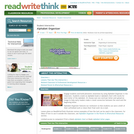
Students use this online tool to create an alphabet chart or pages for an alphabet book.
- Subject:
- Arts and Humanities
- Material Type:
- Activity/Lab
- Interactive
- Provider:
- ReadWriteThink
- Provider Set:
- ReadWriteThink
- Date Added:
- 08/19/2013

Students use this online tool to create an alphabet chart or pages for an alphabet book.

Ever wonder how honey gets from the bee to the table? Join the Bee Cause Project and avid beekeeper, Ted Dennard, on this immersive 360 video to find out just how those amazing bees do it! The National Honey Board has created an amazing look into the life of beekeepers and into the hive. We've created a lesson plan full of resources including science lessons, video links, and a full set of step-by-step printable cards for demonstrating the process of how honey is made!
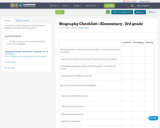
A checklist in student language used by elementary students to self-assess their biographies.
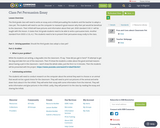
The third grade class will need to write an essay and a trifold persuading the students and the teacher to adopt a class pet. The students will need to use the computer to reasearch good reasosn why their pet would be beneficial to the classroom. Their trifold will have pictures and information about their pet. IDOE standard 3.W.3.1 will be taught with this lesson. It states that 3rd grade students need to be able to write a persuasive texts. Another standard from IDOE is 3.SL.4.2. This students need to be to present their persuasive essay orally to the class. Part 1: Driving question: Should the third grade class adopt a class pet? Part 2: GrabberWhat is your grabber?While the students are writing, a dog walks into the classroom. I’ll say. “How did you get in here?” I’ll attempt to get the dog and take him out of the classroom. Then I’ll show the students a video about the good and bad reasons about having a pet in the classroom. I won’t show the whole video, just the first 3 or 4 minutes. Then the students will be presented with the project. https://www.youtube.com/watch?v=vbwiYOA-RcY Culminating activities: The students will need to conduct research on the computer about the animal they want to choose or an animal that would not be a good choice for the classroom. They will need to print out pictures of the animal and write down facts about it for the trifold. They will write their essay with some information from the internet. They will write information and glue pictures in the trifold. Lastly, they will present it to the class by reading the essay and sharing the trifold.
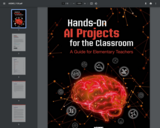
This guide provides student-driven projects that can directly teach subject area standards in tandem with foundational understandings of what AI is, how it works, and how it impacts society.
Instead of simply learning about AI through videos or lectures, the students completing these projects are active participants in their AI exploration. In the process, students work directly with innovative AI technologies, participate in “unplugged” activities that further their understanding of how AI technologies work, and create various authentic products—from presentations to designing an AI robot—to demonstrate their learning.
• Project 1: What AI Does Well and Does Not Do Well
• Project 2: Training Data and Machine Learning
• Project 3: Senses vs. Sensors
• Project 4: Navigation and AI
Visit the ISTE website with all the free practical guides for engaging students in AI creation: https://www.iste.org/areas-of-focus/AI-in-education

The "Into the Book" web site is designed to help elementary students practice eight reading comprehension strategies through playful interactive activities. The site focuses on eight research-based strategies: Using Prior Knowledge, Making Connections, Questioning, Visualizing, Inferring, Summarizing, Evaluating and Synthesizing. "Behind the Lesson," the teacher area of the site, provides information, lesson plans and other resources for teachers.
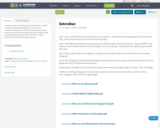
I created a series of lessons that culminate in a student created document of themselves to post in the classroom (mini poster). The lessons focus on student interaction, dictation, grammar, writing, editing, typing and other digital literacy skills. This is more like a project that is broken down into lessons.
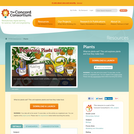
What do plants eat? This unit explores plants and how they make food.
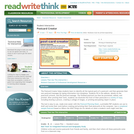
The Postcard Creator helps students learn to identify all the typical parts of a postcard, and then generate their own postcard messages by typing information into letter templates. After printing their texts, students can illustrate the front of their postcards in a variety of ways, including drawing, collage, and stickers.

The interactive Printing Press is designed to assist students in creating newspapers, brochures, and flyers.

After examining recipes written based on students' favorite fairy tales, students research a recipe related to their favorite story, book, or fairy tale and include it in a classroom recipe book.